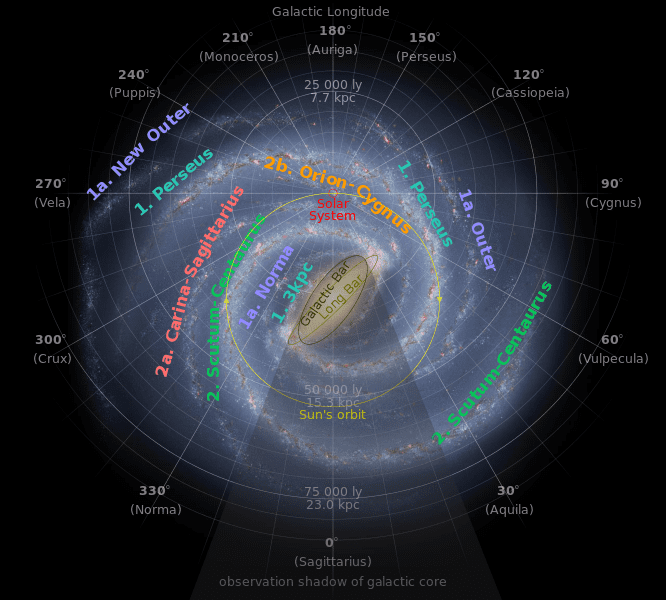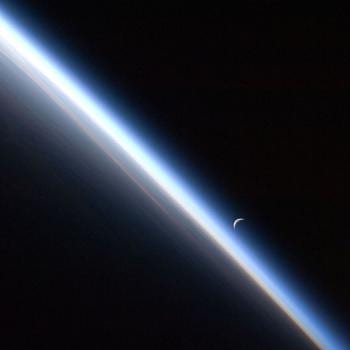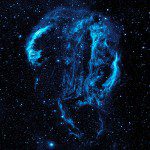
(Wikimedia CC public domain image)
***
Among the most interesting living writers on religion and science is the Israeli-American Gerald L. Schroeder, an Orthodox Jew who earned his B.Sc., his M.Sc., and his Ph.D. in nuclear physics and in earth and planetary sciences at the Massachusetts Institute of Technology (MIT). He teaches currently at the College of Jewish Studies, in Jerusalem.
Here, from his book God According to God: A Scientist Discovers We’ve Been Wrong About God All Along (New York: HarperOne, 2009), is a trio of passages about carbon, first, but also about our rather special location in a quite congenial galaxy and a very nice solar system:
The significance of carbon in life cannot be overstated. It accounts for half the dry weight of our bodies. Carbon along with oxygen, nitrogen, calcium, potassium, iron, and a multitude of other life-essential elements are dependent upon star formation and explosive death (supernovae). As such, they are not distributed uniformly throughout our universe and not even uniformly within a given galaxy. Galaxy type and position within a galaxy play a strong determining factor in the local metal content. The stars of elliptical galaxies are often first-generation stars, many being almost as old as the universe. As such, they are poor in heavy elements.
Globular clusters of stars are also typically metal-poor (“metal” is astronomers’ terminology for elements heavier than helium, that is, those elements formed within stellar furnaces). In addition, the dense packing of the stars within the cluster creates problems for life. Within a radius of 10 to 15 light-years (one light-year, the distance travels in one year, is approximately 9.5 trillion kilometers; trillion in the American use, a million million), a cluster might contain in excess of a thousand stars. The same size sphere around our sun contains less than two dozen stars, with the nearest star, Alpha Centauri (actually a system of three stars locked in gravitational orbit) being 4.3 light-years (40 trillion kilometers) distant. The close proximity among stars in the clusters results in devastating local instabilities. Frequent nearby supernovae and other active sources of intense, sterilizing radiation along with stellar gravitational interactions perturbing planetary orbits spell death for nascent life struggling to gain a planetary foothold. Our star, the sun, is located in what might be termed as a stellar desert.
Collisions among galaxies, though not common at least from evidence within the visible universe, can result in what astronomers refer to as supernovae factories, with stellar explosions every few years. The gestation period for the development of complex animal life exceeded three billion years on earth. If this timing is typical, then the nearly continual onslaught of ruinous radiation associated with these stellar explosions would obviate the potential for advanced life. (63-64)
Spiral galaxies are fit for life because spiral galaxies provide a range of conditions among which are those optimal for nurturing life. The spiral structure offers a variety of stellar concentrations throughout, from high densities near the galactic center and within the spiral arms to very much lower densities of stars in the spaces between the arms. Depending upon how the outer limit of the Milky Way is defined, the diameter of our galaxy is between 80,000 and 100,000 light-years. Our sun likes between two spiral arms, some 27,000 light-years, or approximately two-thirds of the way, out from the Milky Way’s center. Relative to the thickness of the Milky Way’s galactic disk, the solar system is just above (or below, depending upon one’s orientation) the center of the 6,000-light-year-thick central plane.
The earth revolves around the sun at approximately 30 kilometers per second. The sun and the solar system revolve around the center of the Milky Way at some ten times that speed. All revolutions are in the same direction. A deep challenge remains to discover why all components of the universe revolve or rotate. Angular momentum, as the forces of rotation are categorized, is always conserved unless acted upon by an outside force. What force acted to induce the rotations observed is an unsolved puzzle. A universe without rotation would mean a universe without planets and without life. All solids and gases would be gravitationally drawn directly into the parent star rather than revolving around the parent star. (64-65)
That the sun is located between two spiral arms means that it is in a region of low stellar density, with all the life-supporting features that that implies, most important of which are the fewer destructive interactions originating from neighboring stars. Being far from the galactic center shields us from the radiation-rich star-forming processes of the central region and distances us from the devastatingly powerful gravitational reach of the central black hole.
The edges of most galaxies are metal-poor; our positioning within the galaxy places us in a metal-rich area. These heavier elements are needed not only for the molecular structures of life They also are essential for the formation of rocky planets such as our earth.
Our sun is about halfway through its theoretical ten-billion-year life expectancy. All indications are that its energy output has remained fairly constant over the past billion years, neither frying nor freezing the earth’s surface. More than 90 percent of all stars are smaller than the sun. Smaller generally means longer-lived, more time for “evolution” to work its processes, provided it is not so long-lived that it is a first-generation star. That would make it metal deficient.
A planet’s distance from its parent star has a crucial influence on its suitability to nurture life. Proximity to the parent star results in gravitational drag on the planet’s rotation, slowing the rotation through what is termed tidal locking. Gradually the period of rotation becomes similar to the period of the planet’s revolution around the star. The outcome is that the same side of the planet continuously faces the star. The moon relative to the earth and Mercury relative to the sun are cases of tidal lock. We always see the same side of the moon. Mercury revolves around the sun in eighty-eight days and rotates on its axis once in fifty-nine days. On Mercury, the extraordinarily long day results in the sun side baking at 400 degrees C while the shaded side drops to minus 170 degrees C. Our twenty-four-hour rotation spreads the sun’s heat. Our nearly circular orbit keeps the solar input nearly constant year-round. These are two of the many life-giving characteristics of the earth-sun system. (65-66)












